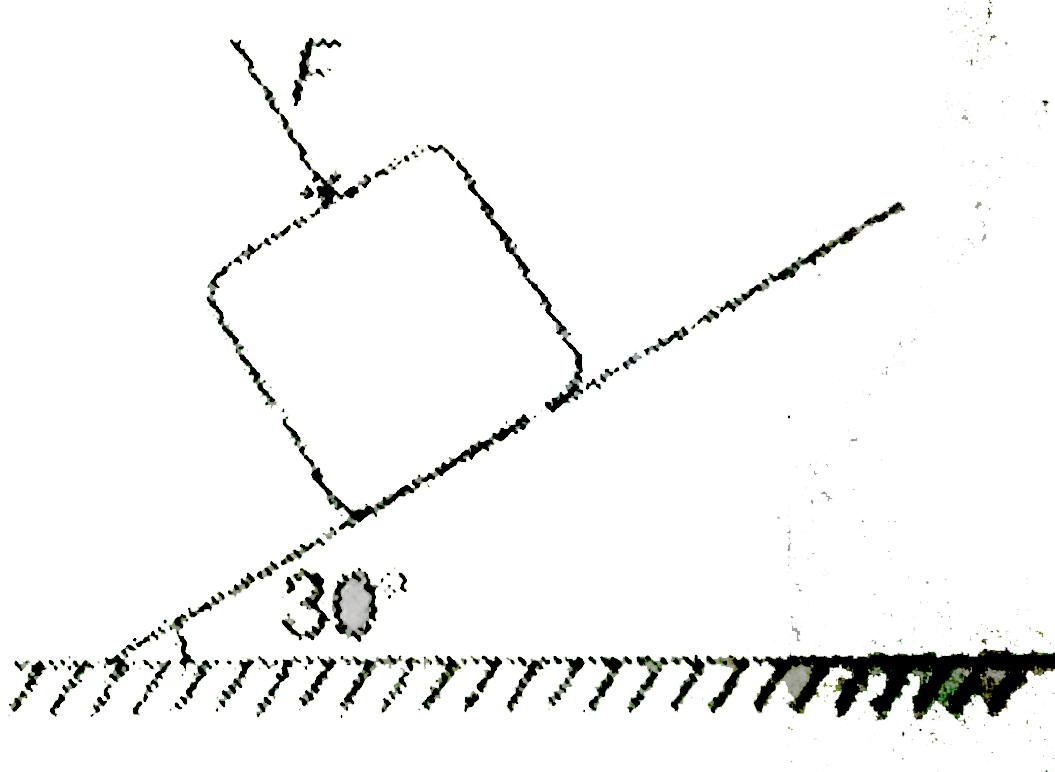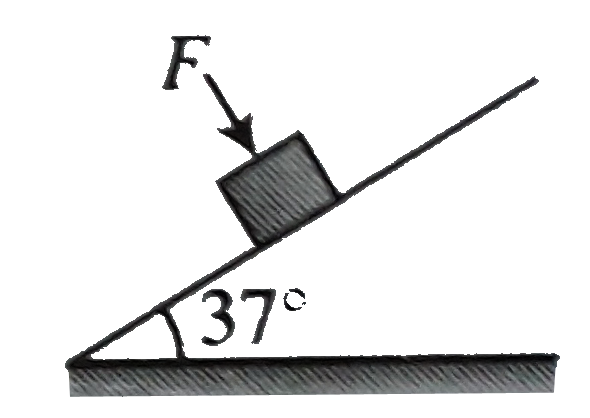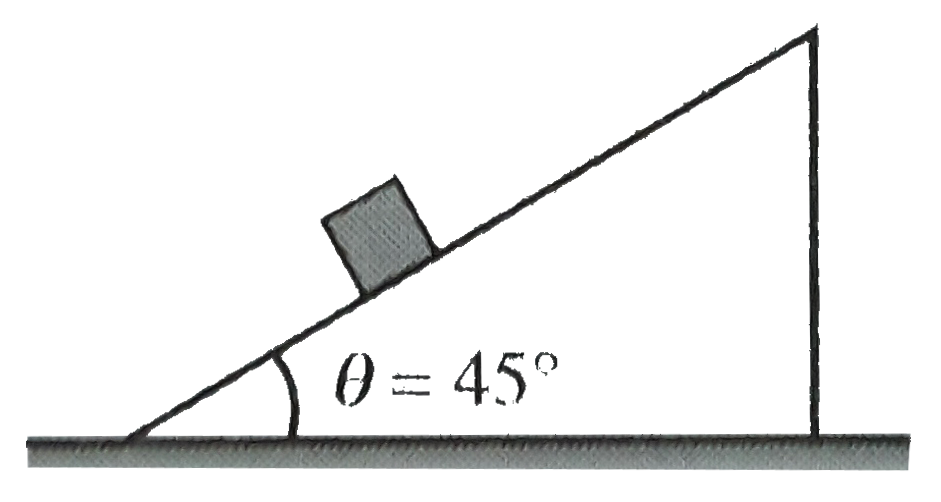A mass of 200kg is resting on a rough inclined plane of angle 30∘. If the coefficient of friction is 1/√3 , find the greatest and the least force acting parallel to the plane which can just maintain the mass in equilibrium.
The correct Answer is:1960N, 0N
To solve the problem, we need to analyze the forces acting on the mass resting on the inclined plane. We will find the greatest and least force acting parallel to the plane that can maintain the mass in equilibrium.
Step 1: Identify the Forces
1. The weight of the mass (W) acts vertically downwards and is given by:
W=mg
where m=200kg and g=10m/s2.
W=200×10=2000N
2. The weight can be resolved into two components:
- Perpendicular to the incline: W⊥=mgcosθ
- Parallel to the incline: W∥=mgsinθ
Step 2: Calculate the Components
1. Calculate W⊥ and W∥:
- For θ=30∘:
W⊥=2000cos(30∘)=2000×√32=1000√3N
W∥=2000sin(30∘)=2000×12=1000N
Step 3: Calculate the Normal Force
1. The normal force (N) is equal to the perpendicular component of the weight:
N=W⊥=1000√3N
Step 4: Calculate the Frictional Force
1. The maximum frictional force (f_max) can be calculated using the coefficient of friction (μ):
fmax=μN=1√3×1000√3=1000N
Step 5: Determine the Forces for Equilibrium
1. For the mass to be in equilibrium, the net force acting parallel to the incline must be zero. Thus, we can write:
Fapplied−W∥−fmax=0
Rearranging gives:
Fapplied=W∥+fmax=1000+1000=2000N
2. For the least force (F_min), we consider the friction acting in the opposite direction:
Fapplied−W∥+fmax=0
Rearranging gives:
Fapplied=W∥−fmax=1000−1000=0N
Conclusion
- The greatest force acting parallel to the plane that can maintain the mass in equilibrium is 2000 N.
- The least force acting parallel to the plane that can maintain the mass in equilibrium is 0 N.
1. The weight of the mass (W) acts vertically downwards and is given by:
W=mg
where m=200kg and g=10m/s2.
W=200×10=2000N
- Perpendicular to the incline: W⊥=mgcosθ
- Parallel to the incline: W∥=mgsinθ
1. Calculate W⊥ and W∥:
- For θ=30∘:
W⊥=2000cos(30∘)=2000×√32=1000√3N
W∥=2000sin(30∘)=2000×12=1000N
1. The normal force (N) is equal to the perpendicular component of the weight:
N=W⊥=1000√3N
1. The maximum frictional force (f_max) can be calculated using the coefficient of friction (μ):
fmax=μN=1√3×1000√3=1000N
1. For the mass to be in equilibrium, the net force acting parallel to the incline must be zero. Thus, we can write:
Fapplied−W∥−fmax=0
Rearranging gives:
Fapplied=W∥+fmax=1000+1000=2000N
Fapplied−W∥+fmax=0
Rearranging gives:
Fapplied=W∥−fmax=1000−1000=0N
- The greatest force acting parallel to the plane that can maintain the mass in equilibrium is 2000 N.
- The least force acting parallel to the plane that can maintain the mass in equilibrium is 0 N.
Topper's Solved these Questions
Similar Questions
Knowledge Check
A block of mass 3 kg rests on a rough inclined plane making an angle of 30∘. With the horizontal. The coefficient of static friction between the block and the plane is 0.7. The frictional force on the block is
A9.8 NB0.7×9.8×√3 NC9.8×√3 ND0.7×9.8 NA block of mass 2kg rests on a rough inclined plane making an angle of 30∘ with the horizontal. The coefficient of static friction between the block and the plane is 0.7. The frictional force on the block is
A10.3NB23.8NC11.9ND6.3NA block of mass m=2kg is resting on a rough inclined plane of inclination of 30∘ as shown in figure. The coefficient of friction between the block and the plane is μ=0.5. What minimum force F should be applied perpendicular to the plane on the block, so that blocks does not slip on the plane? (g=10m/s2)
 A2.68 NBZeroC4.34 ND6.24 N
A2.68 NBZeroC4.34 ND6.24 N
An ice cube is kept on an inclined plane of angle 30∘. The coefficient to kinetic friction between the block and incline plane is the 1/√3. What is the acceleration of the block ?
View SolutionA block of mass 2kg rests on a rough inclined plane making an angle of 30∘ with the horizontal. The coefficient of static friction between the block and the plane is 0.7. The frictional force on the block is
View SolutionA block of mass m is at rest on a rough inclined plane of angle of inclination θ. If coefficient of friction between the block and the inclined plane is μ, then the minimum value of force along the plane required to move the block on the plane is
View SolutionA block of mass 20kg is placed on a rough horizontal plane and a horizontal force of 12N is applied. If coefficient of friction is 0.1 the frictional force acting on it is,
View SolutionA block of mass m=2kg is resting on a inclined plane of inclination 30∘ The coefficient of friction between the block and the plane is μ=0.5 what minimum force F (in newton) should be applied perpendicular to the plane on the block so that the does not slip on the plane?

View Solution
